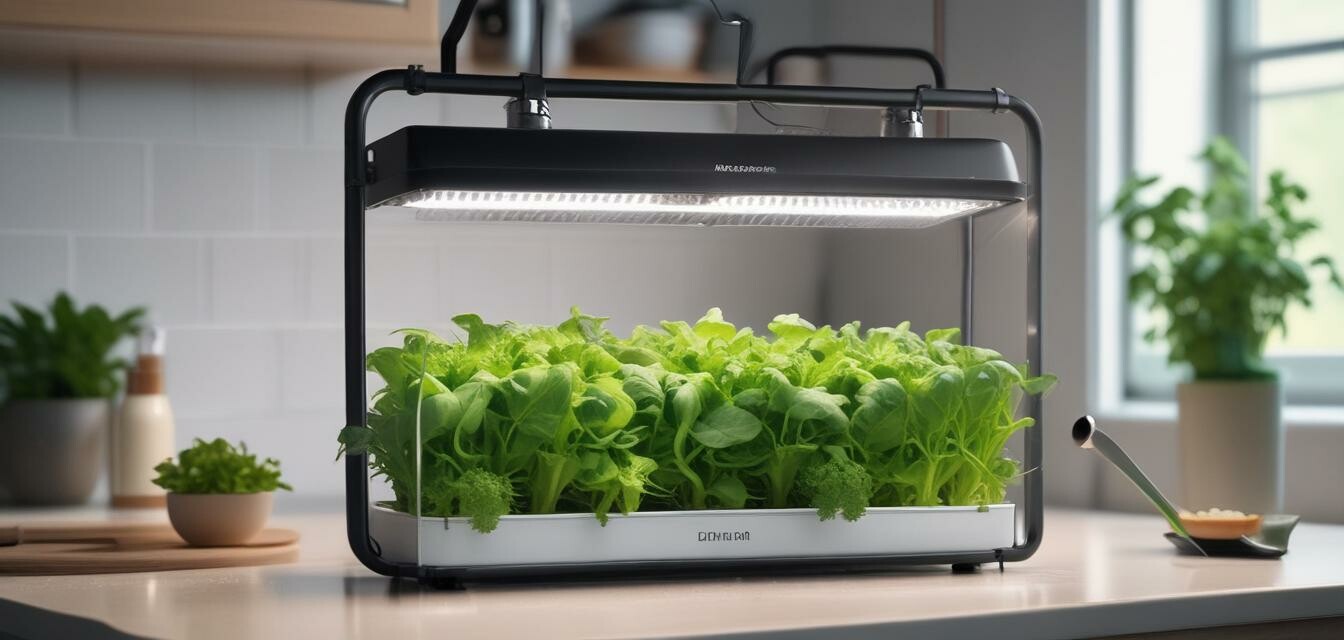
Best Hydroponic Systems for Small Spaces
Key Takeaways
- Compact hydroponic systems are ideal for urban gardening, especially in small apartments.
- Look for systems that use vertical space efficiently.
- Energy-efficient lighting and nutrient systems are essential for plant growth in confined areas.
- Consider automated features to simplify the growing process.
- Regular maintenance and accessibility are key factors in selecting a suitable system.
Urban gardening is gaining popularity as more people live in apartments or homes with limited outdoor space. Hydroponic systems offer a fantastic solution, enabling you to grow fresh herbs, vegetables, and fruits indoors, no matter the size of your space. This guide will walk you through the best hydroponic systems designed specifically for small spaces, highlighting their features, advantages, and factors to consider before making a purchase.
What is a hydroponic system?
A hydroponic system is a soilless farming technique that allows plants to grow directly in a nutrient-rich water solution. This method is advantageous for indoor gardening as it uses less water than traditional soil gardening and accelerates plant growth. Hydroponic systems can vary significantly in size, making them suitable for different spaces, especially compact ones.
Types of hydroponic systems
When choosing a hydroponic system, it's essential to understand the various types and how they work. Here are some popular types that are suitable for small spaces:
- Nutrient Film Technique (NFT): A water film circulates through a sloped trough where plant roots absorb nutrients.
- Deep Water Culture (DWC): Plants sit in a nutrient solution, with their roots submerged in water for easy access to oxygen and nutrients.
- Vertical Hydroponics: Plants are stacked vertically to maximize space, making it perfect for small areas.
- Wicking Systems: A simple and passive system that uses a wick to draw nutrients from a reservoir to the plant roots.
- Aeroponics: Plants hang in the air and are misted with a nutrient solution, allowing for efficient oxygen and nutrient absorption.
Factors to consider
Before diving into our recommendations for the best hydroponic systems for small spaces, consider the following factors:
- Size: Ensure that the system fits well within your available space, ideally using vertical or compact designs.
- Light Requirement: Look for systems with integrated grow lights or ensure that your setup can accommodate adequate lighting.
- Automation: Automated features can save time and effort, making them great for busy individuals.
- Maintenance: Consider the ease of cleaning and maintaining the system. Simpler designs are often better for beginners.
- Cost: Evaluate your budget. There are economical options available for small spaces, but quality should always be a priority.
Comparison of Hydroponic Systems for Small Spaces
| Hydroponic System | Size | Light Requirement | Automation | Maintenance |
|---|---|---|---|---|
| Nutrient Film Technique | Medium | High | Moderate | Moderate |
| Deep Water Culture | Small to Medium | Moderate | Minimal | Simple |
| Vertical Hydroponics | Small | High | Moderate | Moderate |
| Wicking Systems | Small | Low | None | Low |
| Aeroponics | Medium | Very High | High | High |
Best practices for hydroponics in small spaces
Once you've selected a hydroponic system, consider these best practices to maximize your indoor gardening efforts:
- Regularly monitor water levels and nutrients to keep your plants healthy.
- Utilize reflective materials in your setup to optimize light usage.
- Optimize your planting schedule to prevent overcrowding and allow for proper air circulation.
- Grow a mix of plants to diversify your indoor garden and ensure high yields.
Conclusion
Growing fresh plants indoors, even in small spaces, is entirely achievable with the right hydroponic systems. From vertical systems that maximize space to efficient nutrient setups that make gardening easier, there’s a perfect solution for your indoor gardening needs. To further enhance your hydroponic experience, you may explore essential environmental control equipment or check out our guides on growing techniques tailored for hydroponic systems. By following this guide, you're well on your way to transforming your living space into a lush indoor garden.
Tips for beginners
- Start with smaller plants that grow quickly, like herbs or salad greens.
- Keep a journal of your growing process to learn from your successes and mistakes.
- Join online hydroponic communities for support and knowledge sharing.
- Experiment with different nutrient solutions to see what works best for your plants.
Pros
- Efficient use of space
- Faster growth rates
- Reduced water usage
- Year-round gardening potential
Cons
- Initial investment can be higher than traditional gardening
- Requires knowledge of nutrient solutions
- Potential technical issues with systems